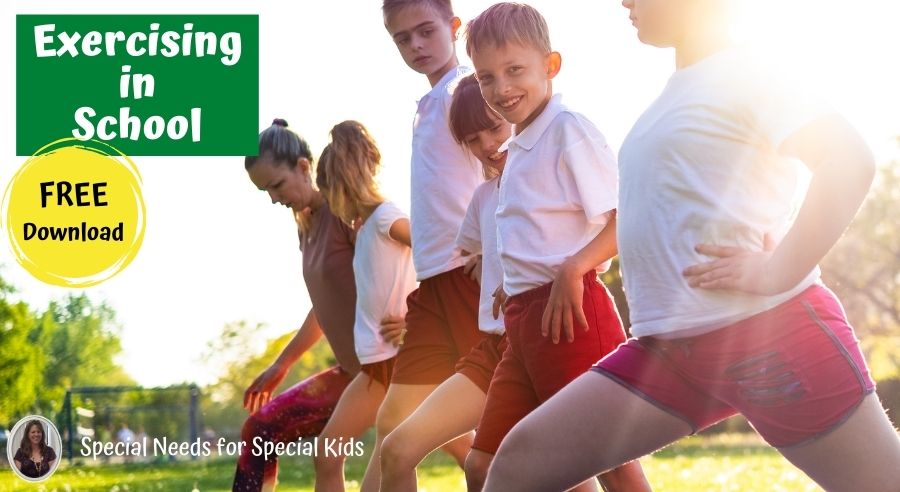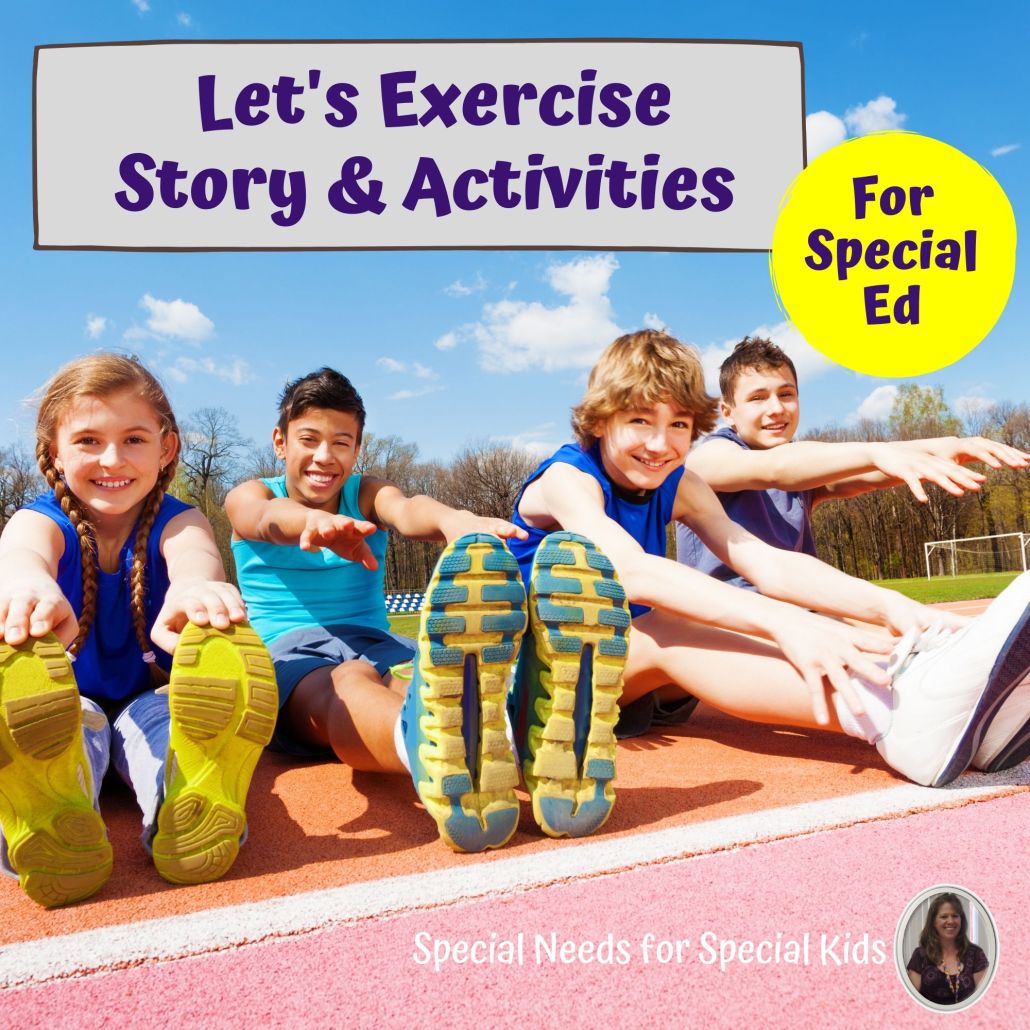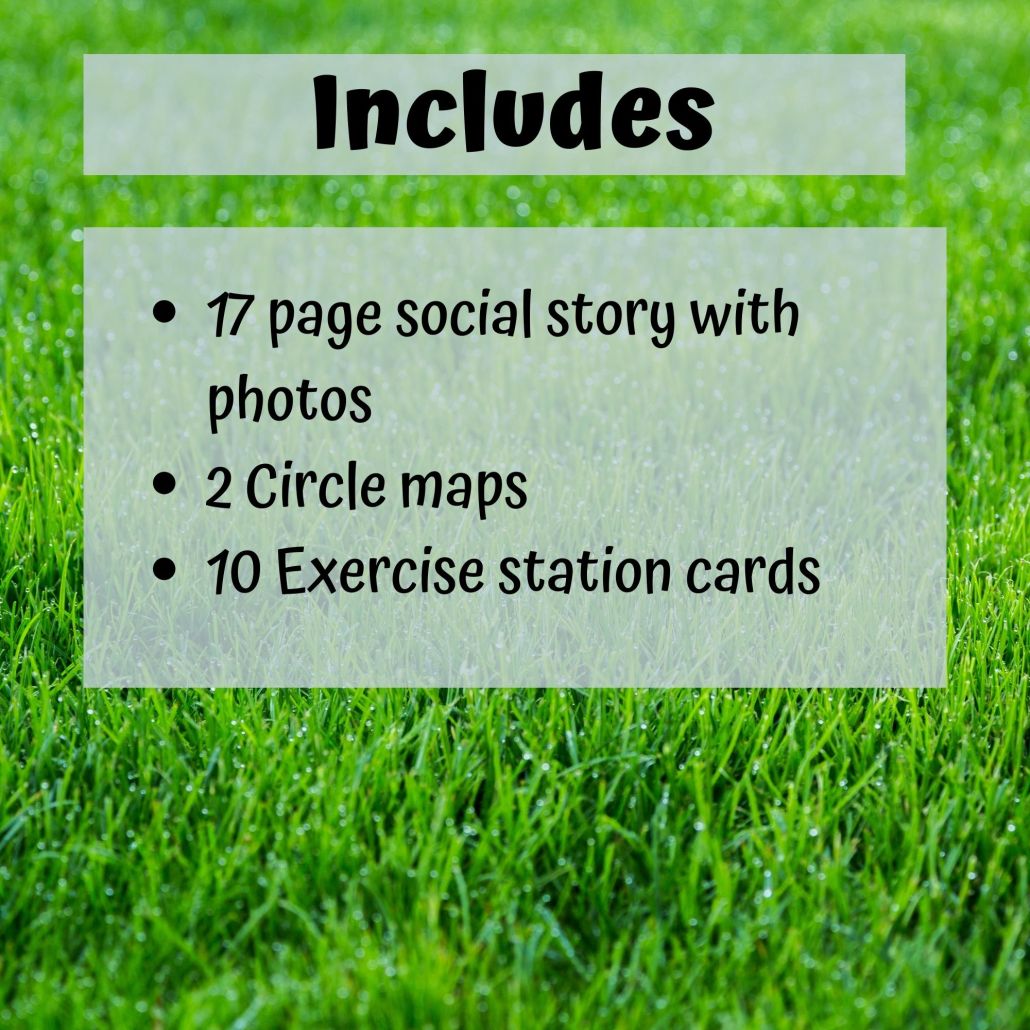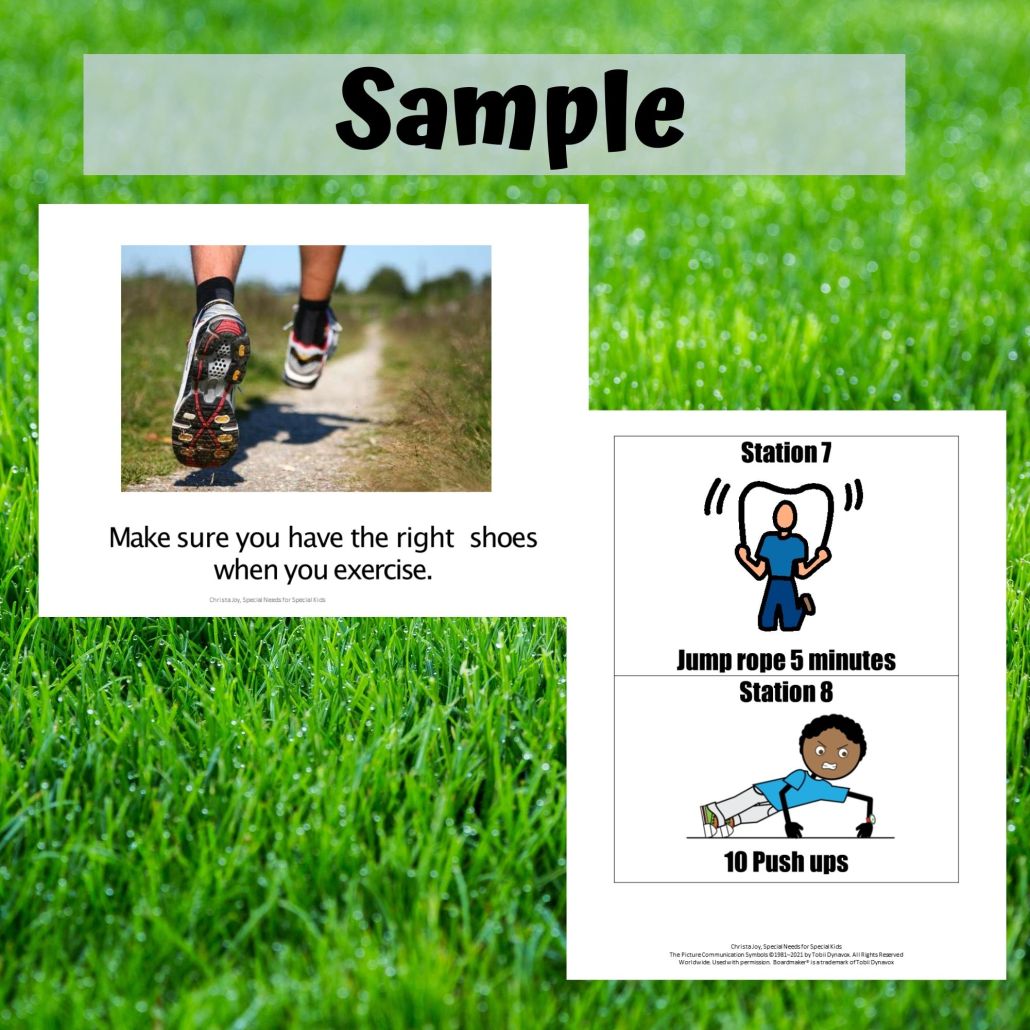We all know how important exercise is for good health. But, if you have an intellectual disability, that may be less obvious to you. Nevertheless, we want to ensure exercising in school is happening with all of our students, even those with some of the most significant challenges.
How do we go about getting our students to exercise in school in a safe, effective, and fun way? Here are some tools and strategies to get you and your students moving more.
Conducting an interest inventory
If we want our students to exercise more in general, then we need to figure out what motivates them and gets them excited. One way to do this is to have your students (along with parental input) complete a questionnaire about different types of exercise and other considerations.
I have put one together for you, that you can download by clicking the button below. It has 18 different questions using picture symbols for answers that your students can circle themselves on how they feel about exercise.
Some of the things that may or may not motivate your students are some of the same things that may or not motivate you when it comes to exercise.
First, exercise comes in all different types.
- Cardio-type workouts that get your heart rate up and get you sweating
- Endurance workouts that are longer but less strenuous
- Strength-building workouts
- Flexibility and mobility routines
Second, exercise can look different and require different supplies.
- Some require specialized equipment, like machines you find in a gym
- Some require more than one person
- Many can be done alone, but some require an instructor
- Then some require no equipment at all
Third, there are lots of environmental considerations.
- Can they be done outside or only inside?
- Could they/do they utilize music?
- How much space do you need?
- What type of surface works best to be on?
Safely exercising in school
As special education teachers, our students often have very unique needs and challenges. Therefore, when exercising in school, there may be more details we need to think about in order to make sure our students are not only successful and motivated but safe.
After conducting the interest inventory, take a look and see what special accommodations or modifications you may need to make for your students. If you plan to do this as a whole class or small group activity, then try to develop one plan that would work for the entire group. It will be much more difficult to manage, and likely less safe if you have a wide variety of equipment.
Assess the number of staff you will need to help you. At least, in the beginning, you will probably need to do quite a bit of prompting and modeling. This means you will need more adults to help guide students and make them feel successful.
Effectively exercising in school
What is your main goal of adding movement to your classroom in a purposeful and healthy way? Knowing WHY you have decided to add exercise to your students’ daily routine is critical for determining whether or not you are being effective.
Here are some questions to ask yourself in the beginning. To learn the answers, plan to collect some data over the next 4-6 weeks to determine if your exercise plan has been effective.
- How often do you want your students to exercise each week?
- How long will each exercise session be?
- Where do you plan to exercise? If you choose outside, what will you do if the weather does not allow you to go outside?
- Do you have all the equipment (if any) that you need?
- Where will you store any equipment in-between sessions?
- Have you gotten approval from the administration?
- Do you have parent support? How will you communicate progress with parents?
- Do you have enough staff?
- Are staff supportive and in agreement with the plan?
- What happens if you are out sick or in a meeting?
- Finally, what does success look like 4 weeks from now? What are the specific measurable goals you hope to achieve with your students in the next 4-6 weeks?
Consistency is the key
Truly, the key to safely and effectively adding exercise to your classroom routine is consistency. In fact, it is likely the biggest key to success in any exercise program.
To learn more about how to achieve consistency in your classroom, visit my blog post Consistency is the Key to Success. It will give you specific guidelines on how to improve the likelihood of doing anything on a long-term regular basis.
But, here is the key takeaway. Make it doable. You can always increase the number of times per week, the number of minutes per session, even the number of laps you are going to walk once you have your routine and expectations solidly in place. Start slow but start with the goal in mind of building a habit that will follow your students throughout their time with you.
Additional Resources
If you are looking for some research on why exercise is beneficial in the classroom, then read this article: Youth Fitness: Exercise Helps Children Excel in School. This article also has a great list of suggested exercises to add depending upon the age of your students.
I have a social story unit all about Exercise. It has a book and visuals to use at some exercise stations. Check out my unit on Let’s Exercise here.





